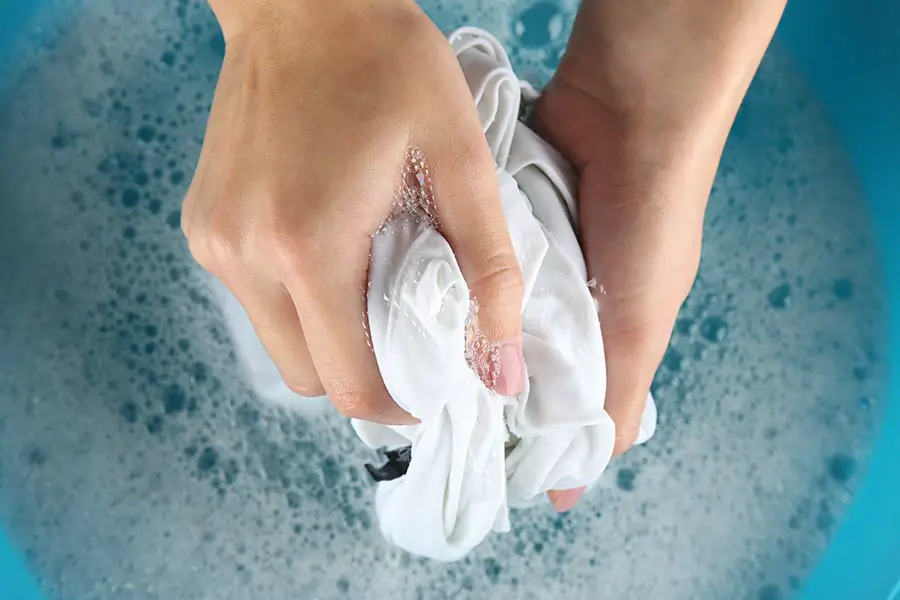Few things in this world are frustrating, such as washing white clothing. You must pay specific attention while washing because they need special care, much more than other colors.
Washing white clothes is something most of us dread, but don’t give up on your whites just yet. Some simple tips and tricks will help make cleaning white clothes a breeze.
In this article, we will discuss how to wash white clothes, including tips on how to take care of them after washing for the first time.
What to Use: Hot Water or Cold Water?
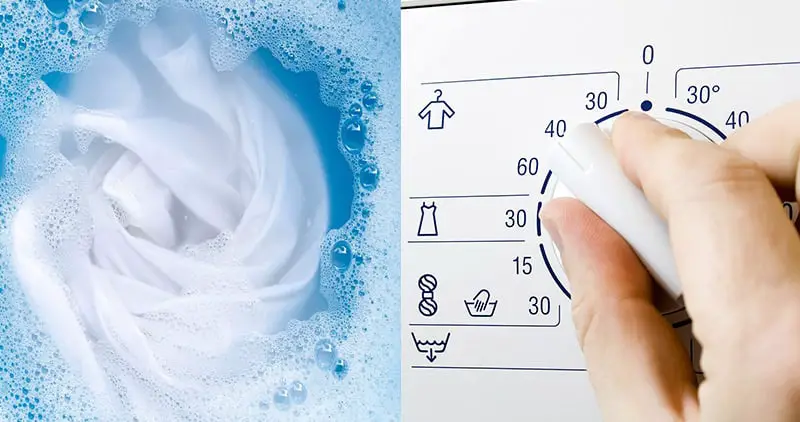
It is debatable!
A hot water wash is ideal for heavy white textiles like white towels and sheets. You’ll want to keep it warm or cold for everything else, depending on how fragile the cloth is.
Use higher cycles as your regular washing machine setting for your typical day-to-day laundry is not required.
By reserving them just for highly soiled goods, you may save money on electricity costs and reduce your carbon impact (assuming the fabric can take the heat).
Consider making these washes shorter than average to help minimize your energy use. However, since high temperatures destroy germs, hot washes are always the best choice if someone in the family is sick.
Cold water cycles produce the least amount of fabric damage; thus, washing items in cold water is a smart option (white or not).
On the delicate or hand-wash cycle, you should always wash delicate fabrics at a low temperature (no more than 80°F (30°C)).
To guarantee a deep, thorough clean when washing whites in colder temps, put your machine to mild wash and use a specially designed cold-water detergent.
Check the care tag on your fabric for the manufacturer’s instructions.
Should You Bleach?
No! Most experts advise against using chlorine bleach on white clothes. Chlorine bleach removes important colors, interacts badly with detergent, and may cause yellowing rather than brightening.
Chlorine bleach causes whites to be yellow due to chemical interaction with protein, including any excess sweat on your T-shirts or bed linens.
Bleach, according to Clorox, may induce yellowing by either breaking down the fibers or damaging the fluorescent whitening chemicals on the garment’s fabric.
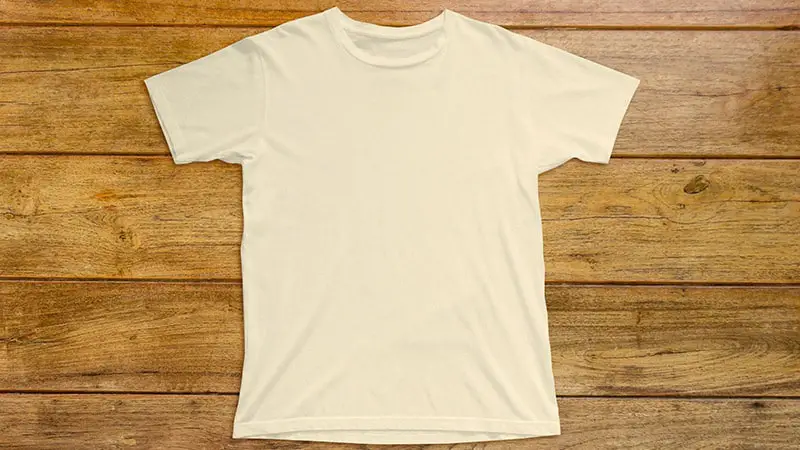
Sometimes, the bright-white hue on your garments is not a natural white but rather a tint closer to ecru. It is a brightening agent in the form of a blue dye.
As a result, when you use bleach, it leaches the color from the item, robbing it of its whiteness and making it seem dingy.
Use a proper washing detergent and a whitening laundry booster, but don’t overdo it with the laundry chemicals. Over time, the accumulation of laundry detergent will give whites a gray tint.
Chlorine-free bleach and laundry boosters are just a few of the safe bleach alternatives we propose to minimize the health risks of bleach.
How To Restore Whiteness
Thankfully, there is a slew of options for restoring the brightness of your whites. From spot treatments to deep-cleaning power washers, there is something for everyone. Here are a few ways to restore whiteness in your garments.
1. Treat stains as soon as possible.
It is preferable to deal with stains as soon as possible. To remove a fresh stain, combine a stain remover with water and massage it with your fingers.
Although this can remove the stain before it settles, you should still wash your item thoroughly when you have the opportunity.
2. Pre-treat any discoloration or yellowing.
Pre-treating with a stain remover or any formulations to treat stains and discoloration.
You can also pretreat with dishwashing solutions or shampoo to remove sweat and other oily stains (use colorless ones to avoid dye transfer).
Using a clean toothbrush or a face brush, gently work the liquid into the cloth.
Apply undiluted liquid oxygen bleach straight to the cloth before laundry to remove colored stains such as food spills (coffee or juice) and underarm yellowing (residue from antiperspirant or deodorant).
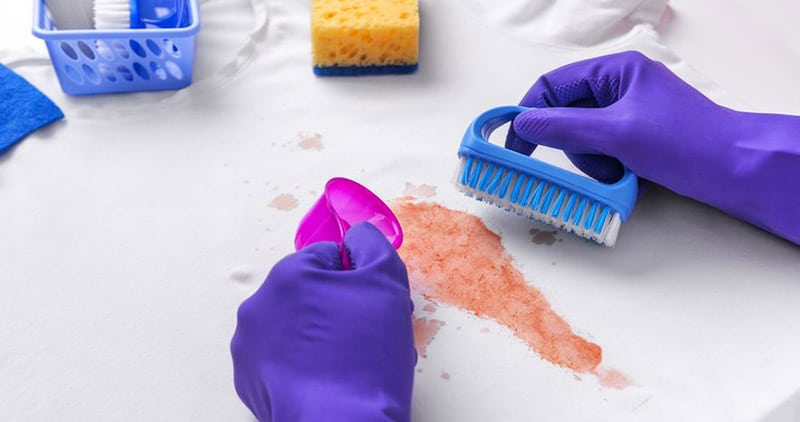
3. Add a laundry booster to the mix.
If your standard laundry detergent is not doing an excellent job of cleaning your whites, consider adding a laundry booster to the mix.
Laundry boosters are non-toxic cleaning solutions that may aid in the removal of stubborn stains and discoloration. Add baking soda or distilled white vinegar as a booster.
4. Check your water.
Depending on your climate and water, you may be washing with “hard” or “soft” water. Both of these factors might make it challenging to clean white garments.
Some boosters, such as borax, may help balance your water, resulting in a more thorough clean.
If your water contains a lot of iron (check for reddish stains in the shower and toilet), use an iron-removing solution to clean it (available in the laundry aisle of many supermarkets).
Use chlorine bleach sparingly: It may have yellow garments combined with iron and hot water. Use oxygen bleach instead, which is a more effective (and ecologically sound) option.
Some detergent labels recommend using more detergent for hard water (as demonstrated by abrasive, difficult-to-clean deposits on bathroom fixtures).
If your water is hard, you may not be able to get whites as white as you’d want until you install a water softener.
How To Wash White Clothes The Right Way
Now that all the pre-reading and pretreating is complete, we may begin with how to wash white clothes correctly.
When we speak about “regular” whites, we refer to shirts, slacks, coats, sweaters, and other everyday wear. (We will address white towels, linens, socks, and delicates later.)
The following are some basic instructions for cleaning white clothes:
Step 1: Wash Whites Separately
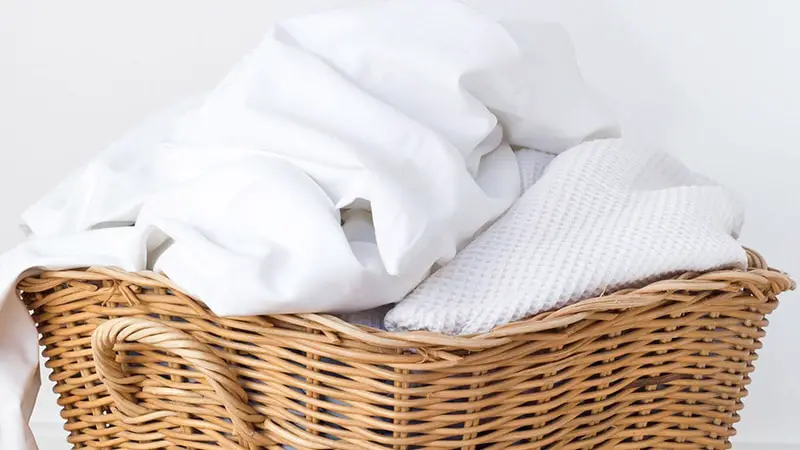
Sorting dirty laundry is the first step in keeping white clothing white. It is best to wash white garments separately to avoid color bleeding and transfer from colorful clothes, which may discolor white fabric.
Step 2: Read The Clothing Labels
Whether you’re washing whites, linens, or delicates, it is crucial to read the care labels first. They will tell you precisely what you need to know to avoid damaging the item.
Step 3: Pre-treat Stains
Before washing, pre-treating stains with a stain remover, baking soda, or chlorine-free bleach is generally a good idea. Rub the solution into the stain gently.
Step 4: Set The Temperature
Most white garments can withstand moderate — but not extreme — heat. Check your care tags to set a temperature that your whole load can endure.
If in doubt, use chilly or cold water to wash. Check the clothes label for hot or cold water instructions.
Step 5: Avoid Overloading
Make sure the washer is not overloaded. It is tempting to stuff the washer to the brim with clothing, but it won’t bring you the cleanest results.
When a washer is overcrowded, there isn’t enough room between things for the water to drain away from the dirt; therefore, the dirt is redeposited on the textiles, making them seem dull.
Step 6: Select the Appropriate Detergent
When searching for an excellent white clothing detergent, look for optical brighteners in the chemical list.
Don’t assume that using more detergent will improve your outcomes. The excess detergent may cling to cloth fibers, attracting dirt.
Your regular detergent will be enough for mild wear and dirt. Add a laundry booster — or use a stain-releasing detergent instead — if you are dealing with highly worn whites.
Step 7: Avoid Fabric Softener
Because fabric softener residue may generate a gray tint on white garments, experts suggest using baking soda and distilled white vinegar instead in the wash.
Step 8: Examine Your Garments
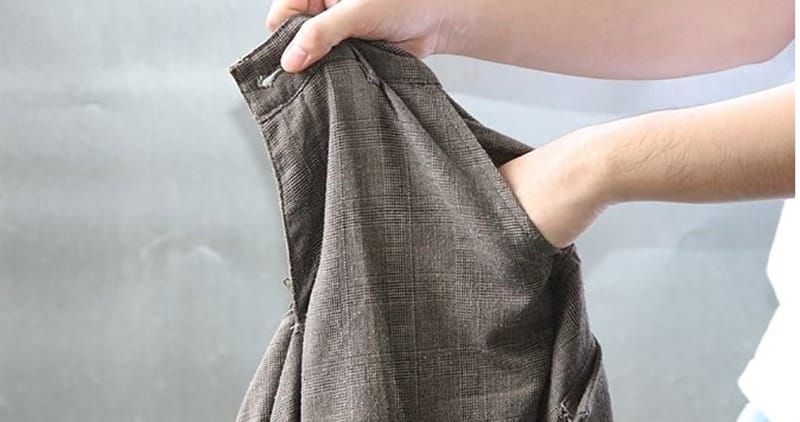
Before putting the clothes in the dryer, double-check each one. If the stains persist, reposition the places and rewash them.
Drying stained clothing on high heat might cause the stain to become permanent. Check whether the clothing is still soiled after the washing cycle has ended. If any persistent stains appear, spot-treat them before rewashing the clothing.
Step 9: Low-heat Drying
You may improve the brightness of white garments and materials by drying them outdoors. The sun’s UV rays will aid in whitening and refreshing your garments. If drying outdoors isn’t an option, use a dryer on a low heat setting to dry your clothes.
Remove wet items from the dryer and air-dry them on a drying rack. Excessive heat may cause stains and leftover dirt to yellow, so be cautious not to over-dry.
Drying white garments is an often-overlooked but critical step in achieving a stunning final result. Over-drying may result in permanent stains and discoloration, which you don’t want after all that hard work cleaning them.
Step 10: Clean Your Washing Machine
Although it may seem paradoxical, you must clean your washing machine regularly to prevent it from making your clothing dirtier, and dropping a washing machine cleaner tablet into your machine once a month is a simple method to achieve this.
Washing White Towels, Linens, and Socks
Towels, bed sheets, and socks can withstand more heat than most other clothing. To be cautious, you should still check their care tags.
Otherwise, wash these things in the same manner as your usual whites. You should wash these goods in hot water to destroy germs and smells.
Washing Delicate Whites
Check your delicates’ care labels to know whether they need to be hand-washed.
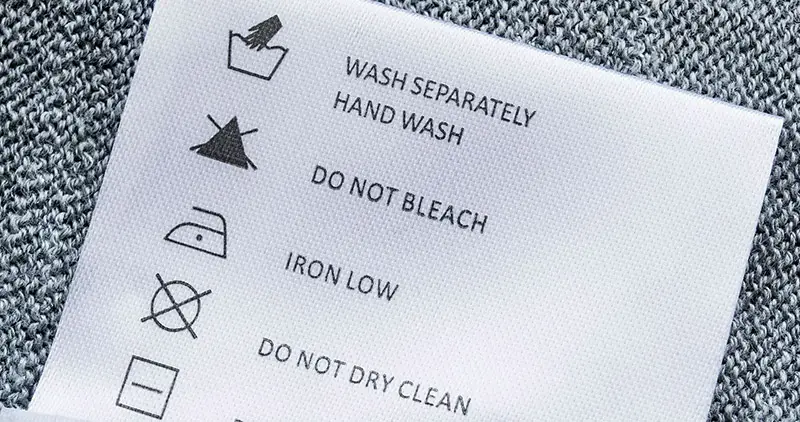
For machine washing, use a moderate cycle with cool water. Use a washing bag to protect delicates with buttons, hooks, or straps from damage.
Extra Tips
- Clean your washer at least once every three months to avoid discoloring your whites.
- Add a half cup of borax or one cup of baking soda to each cycle of white laundry to improve its performance.
- Correctly use chlorine bleach. When you use bleach white clothes with detergent, it reduces the effectiveness of the detergent.
- Consider installing a water softening system if you have hard water. Hard water contains minerals that may make whites seem drab.
- Lemon juice is a natural bleaching agent that works well on whites. Soak the garments in half a cup of lemon juice in hot water overnight before washing them the following day.
- Another option is to clean whites with distilled white vinegar, which has a similar effect to lemon juice. Before washing a load of clothing, add 1/4 to 12 cups of distilled white vinegar to it.
- Make use of borax. Borax is a natural enhancing agent that softens hard water, dissolves residue from white textiles, and improves the look of whites. When using it, follow the guidelines on the package.
- Use baking soda instead of borax to wash white clothes.
- Dishwashing liquid has brighteners and may be used to wash underwear and socks for children. While washing your clothing, drop a few spoons into the water.
- To make a fantastic spot remover, combine one part dishwashing liquid with two parts hydrogen peroxide. Before washing your garments, rub them into the underarms, collars, and soiled areas.
- Reduce the amount of detergent you use every load to 2 tablespoons.
- Even if you don’t wash white clothes, dry clean them after one use.
- White garments might get yellowed due to perspiration, lingering sweat, or body oil.
- Instead of applying bleach separately and risking discoloration from overuse, use a laundry detergent that already includes it.
- Dry your white items according to the fabric’s manufacturer’s instructions.
How To Store White Clothing

Wash and dry your whites before putting them away since they are less prone to discoloration.
Storing white clothing in tubs or bags prevents ventilation, which may cause browning and discoloration. Use cotton garment bags to preserve out-of-season white clothes from dust and filth.
Avoiding stains and keeping whites white is easy with a few tips and tricks. The best way to become a washing machine wizard is to use these tips for dirty clothes; soon, you’ll be washing your whites like a professional.
If you’ve been contemplating changing your method or even trying new ones, we hope you found the methods above to wash white clothes informative and valuable.

